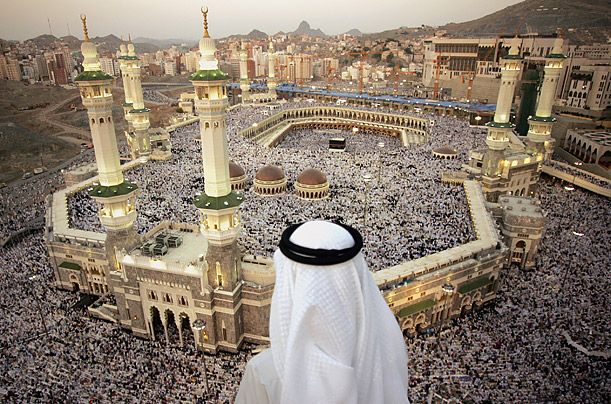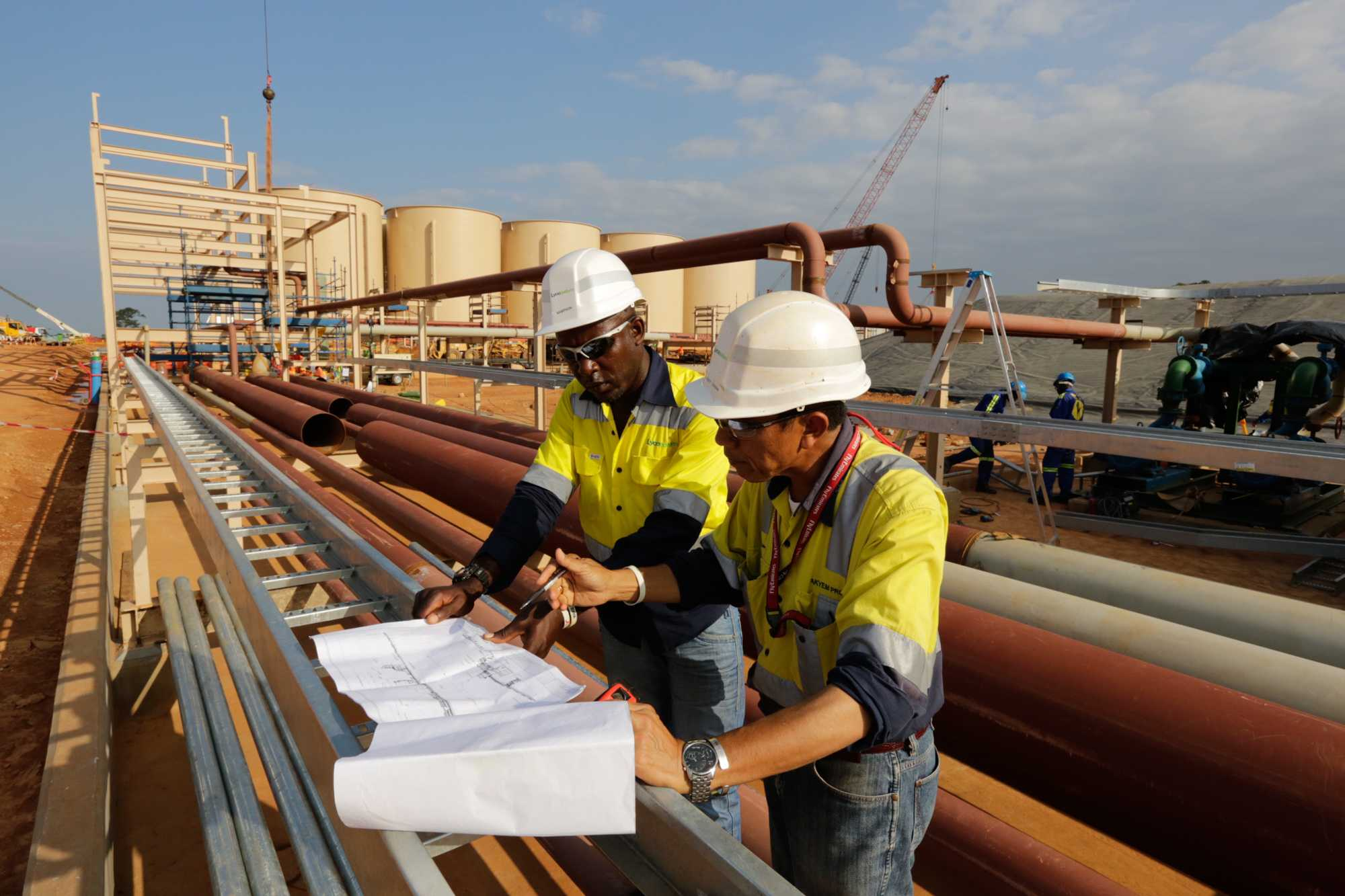
The Hajj pilgrimage, a cornerstone of the Islamic faith, sees millions of Muslims from around the world journey to Mecca, Saudi Arabia, each year. This grand event is not only a profound spiritual gathering but also a testament to the incredible infrastructural developments that Saudi Arabia has undertaken to ensure its smooth execution. As the kingdom progresses, the Hajj pilgrimage plays a pivotal role, both in terms of infrastructure enhancement and economic diversification.
State-of-the-Art Infrastructure for Seamless Pilgrimage
The logistical challenge of accommodating and managing millions of pilgrims is monumental. Saudi Arabia has met this challenge with impressive infrastructure projects aimed at ensuring safety, comfort, and efficiency.
"The expansion of the Grand Mosque in Mecca, which now accommodates over two million worshippers, reflects our commitment to providing the best possible experience for pilgrims," stated Dr. Mohammed Saleh Benten, Minister of Hajj and Umrah. The mosque's expansion, which includes new prayer areas, escalators, and air conditioning systems, ensures that pilgrims can perform their rituals in comfort, regardless of the weather conditions.
Another crucial development is the Makkah Metro, a rapid transit system specifically designed to transport pilgrims between the holy sites of Mina, Arafat, and Muzdalifah. This system significantly reduces traffic congestion and travel time, enhancing the overall experience for pilgrims. "The Makkah Metro is a game-changer in how we manage the flow of millions of pilgrims efficiently and safely," remarked Dr. Rumaih Al-Rumaih, President of the Saudi Transport General Authority.
Additionally, the Haramain High-Speed Railway, connecting Mecca and Medina, provides a fast and reliable transportation option, easing the journey for many. "The Haramain High-Speed Railway has revolutionized travel between the holy cities, offering a modern and efficient means of transportation," highlighted Dr. Bashar Al Malik, CEO of the Saudi Railway Company.
Furthermore, the newly constructed tents in Mina, made from fire-resistant materials, offer safe and comfortable accommodations for the pilgrims. These tents are equipped with modern amenities, ensuring a restful stay during the intense days of the pilgrimage.
Advanced Health and Safety Facilities
Ensuring the health and safety of millions of pilgrims is a top priority. Saudi Arabia has established numerous healthcare facilities and emergency services around the holy sites. The Ministry of Health has set up temporary hospitals and clinics in strategic locations to provide immediate medical care to pilgrims. "Our healthcare infrastructure during Hajj is designed to handle any medical emergencies swiftly and efficiently," stated Dr. Tawfiq Al-Rabiah, Minister of Health.
Enhanced Digital Services
In the digital age, technology plays a crucial role in managing the Hajj pilgrimage. The Saudi government has introduced several digital initiatives to facilitate a seamless experience for pilgrims. The "Hajj Smart Card" is one such initiative that allows pilgrims to access essential services, such as transportation, accommodation, and medical assistance, through a single card. "The Hajj Smart Card is an innovation that enhances the efficiency and safety of the pilgrimage," noted Eng. Abdulrahman Al-Fadhli, Minister of Environment, Water, and Agriculture.
Infrastructure Projects in Water and Electricity
Ensuring a steady supply of water and electricity during Hajj is a critical component of Saudi Arabia's infrastructure strategy. The Saline Water Conversion Corporation (SWCC) has expanded its desalination plants to meet the high demand for potable water. "Our desalination projects are crucial in providing clean and safe drinking water for millions of pilgrims," said Abdullah Al-Abdulkarim, Governor of SWCC.
Additionally, the National Water Company (NWC) has upgraded the water distribution network to ensure efficient water supply throughout the pilgrimage sites. These projects are part of a broader effort to enhance the kingdom's water infrastructure, ensuring sustainability and reliability.
In the realm of electricity, the Saudi Electricity Company (SEC) has undertaken significant projects to ensure uninterrupted power supply during Hajj. "Our advanced grid management systems and additional power generation units are in place to meet the high energy demands during Hajj," explained Khaled Al-Tamimi, CEO of SEC. The introduction of smart grids and renewable energy sources, such as solar power, highlights the kingdom's commitment to sustainable energy solutions.
Enhanced Air Transport Infrastructure
The influx of millions of international pilgrims necessitates robust air transport infrastructure. The King Abdulaziz International Airport in Jeddah, which serves as the main gateway for Hajj pilgrims, has undergone extensive renovations and expansions. "Our new terminal can handle up to 30 million passengers annually, significantly improving the arrival and departure experience for Hajj pilgrims," stated Raed Al-Idrissi, General Manager of King Abdulaziz International Airport.
Additionally, the Prince Mohammad bin Abdulaziz International Airport in Medina has also been upgraded to accommodate the growing number of pilgrims. The implementation of advanced security systems, increased check-in counters, and enhanced passenger services ensure that pilgrims can travel with ease and comfort.
Internet and Communication Services
In today's connected world, ensuring reliable internet and communication services during Hajj is essential. The Saudi Telecommunications Company (STC) has deployed extensive network upgrades to provide high-speed internet and mobile connectivity throughout the pilgrimage sites. "Our enhanced network infrastructure ensures that pilgrims can stay connected with their families and access important information easily," noted Nasser Al-Nasser, CEO of STC.
The introduction of 5G technology in key areas has further enhanced the digital experience for pilgrims, enabling real-time navigation, virtual guides, and access to online services. These advancements in communication infrastructure are crucial in managing the large crowds and ensuring a safe and coordinated pilgrimage.
Sustainability at the Forefront
Sustainability is a key focus for Saudi Arabia, and the Hajj pilgrimage is no exception. The kingdom has implemented several green initiatives to minimize the environmental impact of the pilgrimage. For instance, solar-powered facilities and waste recycling programs have been introduced in key areas. "Our goal is to ensure that the Hajj pilgrimage is not only spiritually fulfilling but also environmentally sustainable," noted Abdulrahman Al-Fadley, Minister of Environment, Water, and Agriculture.
The use of environmentally friendly materials in the construction of infrastructure and the promotion of water conservation practices are additional measures that highlight the commitment to sustainability. The authorities have also developed a comprehensive waste management system that efficiently handles the massive amount of waste generated during Hajj. This system includes waste segregation, recycling, and safe disposal, ensuring that the holy sites remain clean and hygienic.
Economic Implications
The economic impact of the Hajj pilgrimage on Saudi Arabia is substantial. Each year, the pilgrimage generates significant revenue from various sectors, including hospitality, transportation, and retail. This influx of revenue supports local businesses and creates numerous job opportunities, thereby contributing to the overall economic growth of the region.
In alignment with its broader economic goals, Saudi Arabia aims to diversify its economy by reducing its dependency on oil revenues. The Hajj and Umrah sector is a critical component of this strategy. By investing in infrastructure and improving services for pilgrims, the kingdom aims to increase the number of visitors to 30 million annually by 2030. "The growth of the Hajj and Umrah sector is pivotal to our economic objectives. It will significantly contribute to our GDP and create sustainable job opportunities," emphasized Fahd Hamidaddin, CEO of the Saudi Tourism Authority.
Additionally, the ongoing infrastructure projects related to Hajj have stimulated the construction industry, leading to advancements in technology and the development of new skills among the workforce. This, in turn, supports the kingdom’s broader goals of innovation and modernization.
Conclusion
The annual Hajj pilgrimage is more than a religious duty; it is a demonstration of Saudi Arabia's commitment to enhancing infrastructure, promoting sustainability, and achieving economic diversification. The kingdom's efforts in providing world-class facilities and services for pilgrims are commendable, ensuring that the Hajj experience is safe, comfortable, and spiritually fulfilling.
As Saudi Arabia continues to progress, the Hajj pilgrimage will undoubtedly remain a vital contributor to its economic and developmental aspirations. These efforts align seamlessly with Vision 2030, Saudi Arabia's strategic framework to reduce its dependence on oil, diversify its economy, and develop public service sectors. Vision 2030 is driving the country towards a vibrant society, a thriving economy, and an ambitious nation. By leveraging the Hajj pilgrimage, Saudi Arabia is not only honoring its religious heritage but also paving the way for a sustainable and prosperous future. This integration of tradition with modernity underscores the kingdom’s determination to lead in infrastructure innovation and economic resilience, ensuring a lasting impact on both the nation and the global community.
The strategic investments in infrastructure, healthcare, digital services, and sustainability initiatives highlight Saudi Arabia's holistic approach to managing the Hajj pilgrimage. These efforts not only enhance the spiritual journey for millions of Muslims but also showcase the kingdom’s ability to execute large-scale projects that contribute to its long-term vision. As the world watches, Saudi Arabia continues to set new benchmarks in managing one of the largest annual human gatherings, demonstrating that infrastructure and innovation are indeed the pillars supporting the Hajj pilgrimage.










